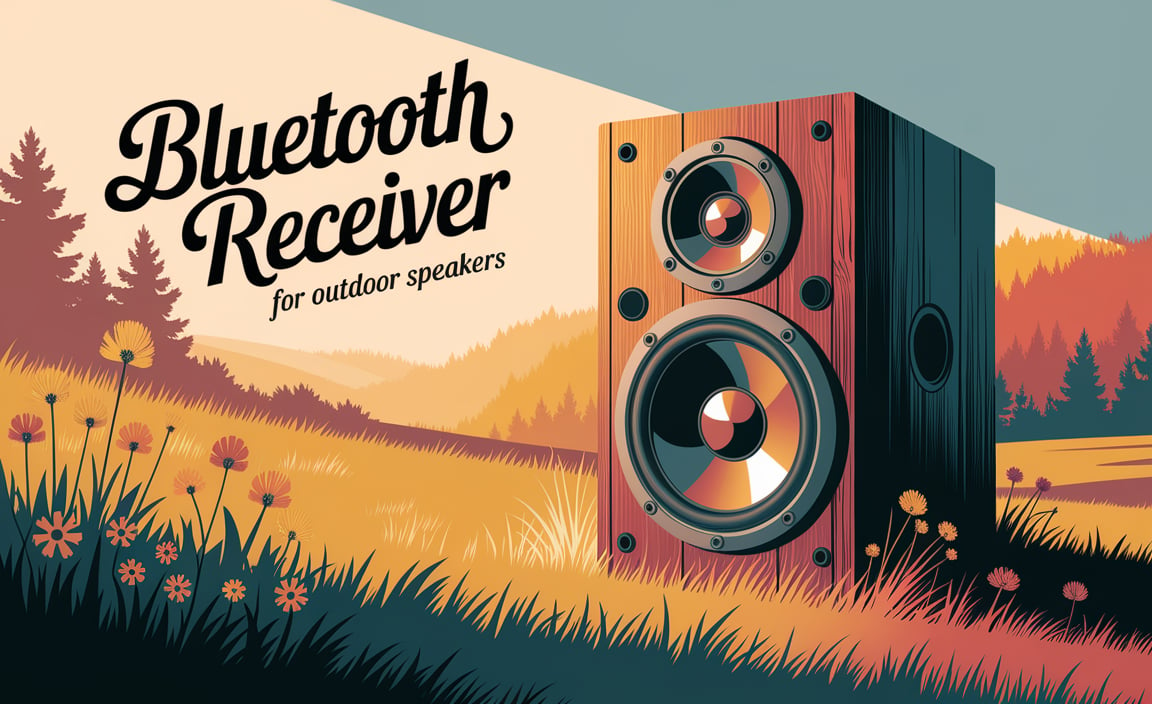Build a fantastic indoor obstacle course with simple household items for hours of active fun! This guide provides genius, budget-friendly ideas to get kids moving, problem-solving, and laughing, no matter the weather. We’ll show you how to transform your living room into an adventure zone easily and safely.
Welcome, fellow plant lovers and DIY enthusiasts! Are you looking for a way to keep the little ones (and maybe even yourselves!) entertained and active when the weather outside just isn’t cooperating? Setting up an indoor obstacle course sounds like a fantastic idea! It can be a bit daunting to figure out where to start, especially with limited space and little ones who have tons of energy. But don’t you worry! We can easily turn everyday items into an exciting adventure. This guide is here to help you create a safe, fun, and engaging obstacle course right in your home. Get ready to unleash some indoor energy and creativity!
Why Build an Indoor Obstacle Course?
Creating an indoor obstacle course is a wonderful way to encourage physical activity, boost problem-solving skills, and provide a great outlet for pent-up energy. Especially on rainy days or during chilly winter months, kids can become restless. An obstacle course offers a structured yet creative way for them to move their bodies, build coordination, and develop a sense of accomplishment. It’s also a fantastic way to engage in family fun, fostering teamwork and laughter. Plus, it requires minimal setup and uses items you likely already have around the house, making it an eco-friendly and budget-conscious activity.
Getting Started: Safety First!
Before we dive into the fun ideas, it’s crucial to think about safety. A well-planned obstacle course means happy kids and peace of mind for you. Always make sure the space you choose is clear of sharp objects or anything that could be a tripping hazard. Soft surfaces are your best friend – think rugs, blankets, or yoga mats for landing areas. Ensure any furniture used is stable and cannot be easily tipped over. Supervise younger children at all times, and adjust the challenges to suit the age and abilities of the participants. Remember, the goal is fun and safe exploration!
When planning your course, consider the following safety checkpoints:
- Clear Pathways: Ensure there’s enough space to move between obstacles without bumping into walls or furniture.
- Soft Landings: Place cushions, pillows, or soft mats where participants might jump or land.
- Stable Structures: If using chairs or tables, ensure they are sturdy and won’t wobble or collapse.
- Age Appropriateness: Tailor the difficulty of each station to the age and coordination of the children participating.
- Supervision: Always keep an eye on younger children to ensure they navigate the course safely.
- No Sharp Edges: Scan the area for anything with sharp corners or edges and either remove them or pad them.
Genius Ideas for Indoor Obstacle Course Stations
Now for the really exciting part – brainstorming the actual obstacles! The beauty of an indoor obstacle course is its adaptability. You can use almost anything you have on hand. Here are some creative ideas to get you started, broken down into different types of challenges:
Crawling and Tunnel Challenges
These stations are great for developing gross motor skills and coordination. They encourage children to move their bodies in different ways.
- The Pillow Fort Tunnel: Drape blankets or sheets over chairs, a sofa, or a sturdy table to create a cozy tunnel. Kids can crawl through it to reach the next challenge. This is a classic for a reason!
- Under the Table Crawl: Simply clear the space under a dining table and let them crawl from one side to the other. You can even lay a blanket over the top for added darkness and mystery.
- The Laundry Basket Roll: For very young children, a large, sturdy laundry basket (empty, of course!) can be turned on its side. They can carefully crawl into one end and out the other. Ensure the basket is stable and won’t tip.
- The Cardboard Box Maze: If you have a few large cardboard boxes, you can connect them to create a simple maze or a series of tunnels. Cut out openings for entry and exit points.
Jumping and Hopping Challenges
These stations are excellent for building leg strength, balance, and spatial awareness.
- The Hula Hoop Hop: Lay several hula hoops on the floor a short distance apart. Kids have to hop from one hoop to the next. You can make it harder by varying the distances.
- Couch Cushion Leap: Arrange couch cushions or pillows on the floor, creating “islands” they must jump between. Make sure they are secure and won’t slide.
- Painter’s Tape Lines: Use painter’s tape (it won’t damage your floors!) to create lines on the floor that kids have to jump over or hop along. You can make straight lines, zigzags, or even squares to jump into. Visit Lowe’s guides on using tape for ideas on different line applications.
- The Pool Noodle Jump: Place pool noodles on the floor and have them jump over them. You can vary the height by propping one end on a small stack of books or cushions.
Balancing and Walking Challenges
Improve stability and concentration with these fun balancing acts.
- The Straight Line Walk: Use painter’s tape to create a long, straight line on the floor. Kids have to walk heel-to-toe along the line as if it were a tightrope.
- The Wobble Board (DIY): Place a sturdy, flat plank of wood on top of a rolled-up towel or a pool noodle. Kids carefully walk across it, trying not to step off. Ensure the plank is wide and stable, and the supports are secure.
- Curvy Path Challenge: Create a winding path with painter’s tape or by alternating cushions and require them to follow it without stepping off the designated path.
- Object Balance Beam: Place a sturdy, flat object like a thick book or a small placemat on the floor. They have to step onto it with one foot, then the other, and try to balance for a few seconds.
Throwing and Aiming Challenges
These stations help develop hand-eye coordination and fine motor skills.
- The Sock Toss: Roll up several socks into balls. Set up a laundry basket, bucket, or even a large bowl a few feet away and have them toss the sock balls into it.
- Bean Bag Blast: If you have bean bags, they are perfect for this. Set up targets like cardboard boxes with holes cut out or designated spots on the floor.
- Water Bottle Knockdown: Arrange empty plastic water bottles or empty cans. Kids can use a soft ball or rolled-up socks to try and knock them over.
- Ring Toss (DIY): Use painter’s tape to create a target on a wall or floor. Make rings out of rolled-up paper or pipe cleaners and have them toss them onto the target spots.
Agility and Maze Challenges
These stations encourage quick movements and decision-making.
- The Cone Weave: Set up empty plastic cups, toilet paper rolls, or actual cones in a zig-zag pattern. Kids have to weave through them without knocking them over.
- The Chair Maze: Arrange a few sturdy chairs in a pattern and have the kids navigate through them by stepping over, under (if safe and possible!), or around.
- The Sticky Note Grid: Cover a wall or a large sheet of paper with sticky notes. Create a simple pattern (e.g., red, blue, red, blue, etc.) and have them touch the notes in the correct sequence. Learn more about creating effective visual aids at NASA’s STEM at Home resources.
- The Mirror Maze (Simple): Place two large mirrors opposite each other, creating an illusion of a longer path or maze. Have them follow the path as directed.
Putting It All Together: Planning Your Course
Once you have a collection of amazing ideas, it’s time to plan how they will fit together. Think about the flow of your home and the space available. A good obstacle course has a variety of challenges and a clear start and finish line.
Step-by-Step Course Creation
- Choose Your Space: Identify the best area in your home – the living room, a playroom, or even a large hallway can work.
- Map It Out: Sketch a simple layout of your space and mark where each obstacle will go. Consider the age and size of the participants when deciding on spacing.
- Gather Your Materials: Collect all the necessary household items you’ll need for your chosen stations.
- Set Up Each Station: Carefully arrange the items for each obstacle, ensuring they are secure and safe.
- Create Clear Pathways: Make sure there are clear, safe routes between each station.
- Add the Finishing Touches: Include a start and finish line (decorated with balloons or streamers, perhaps!) and maybe some encouraging signs.
- Do a Safety Check: Walk through the entire course yourself to ensure everything is stable and hazard-free.
Sample Indoor Obstacle Course Layout
Here’s an example of how you might combine different stations in a typical living room:
| Station Number | Obstacle Type | Description | Materials Needed | Skills Developed |
|---|---|---|---|---|
| 1 | Start | Participants begin at the designated start line. | Painter’s tape | Following instructions |
| 2 | Crawling | Crawl through a pillow fort tunnel. | Chairs, blankets/sheets | Gross motor skills, spatial awareness |
| 3 | Jumping | Hop across a series of spaced-out couch cushions. | Couch cushions (secured) | Leg strength, balance, coordination |
| 4 | Agility | Weave through a zig-zag pattern of empty plastic cups. | Empty plastic cups, painter’s tape | Agility, quickness, motor control |
| 5 | Throwing | Toss three rolled-up socks into a laundry basket. | Socks, laundry basket | Hand-eye coordination, aiming |
| 6 | Balancing | Walk heel-to-toe along a straight painter’s tape line. | Painter’s tape | Balance, concentration |
| 7 | Finish | Cross the finish line to complete the course! | Painter’s tape, streamers/balloons (optional) | Sense of accomplishment |
Tips for Making it Even More Genius
Want to elevate your indoor obstacle course from fun to truly genius? Here are some extra touches:
- Themed Courses: Choose a theme like “Jungle Adventure,” “Space Mission,” or “Superhero Training.” Decorate accordingly!
- Music and Sound Effects: Play upbeat music to keep the energy high, or add sound effects for different stations.
- Time Challenges: For older kids or families playing together, time each person to add a competitive edge.
- Prize Station: Have a small “prize” at the end – perhaps a healthy snack, a sticker, or a special privilege.
- Build it Together: Involve the kids in the planning and building process. This makes it even more engaging for them and teaches them valuable skills.
- Adapt for Different Ages: You can easily make stations easier or harder by adjusting distances, heights, or adding complexity.
- Sensory Stations: Incorporate materials that engage different senses, like a bubble-blowing station or a station where they have to identify objects by touch in a box.
Making it Eco-Friendly
As an eco-conscious gardener, I love that obstacle courses can be super eco-friendly! By using items you already have, you’re reducing the need to buy new plastic toys or materials. Repurposing cardboard boxes, old blankets, and laundry items is a fantastic way to give things a second life. Instead of buying specific equipment, think creatively about what’s available in your home. This approach aligns perfectly with sustainable living principles – reducing waste and making the most of what we have.
Consider these eco-friendly twists:
- Cardboard Creations: Use old delivery boxes to build tunnels, ramps, or mazes. They are easily recyclable afterwards.
- Fabric Fun: Old sheets, blankets, and towels can be used for tunnels, forts, or soft landing zones.
- Natural Elements (Indoor Version): If you have sturdy house plants, you can create a “forest” they carefully weave through (ensuring plants are safe and out of reach of little hands).
- Reclaimed Materials: Look for sturdy items like empty plastic containers (yogurt tubs, milk jugs), paper towel rolls, or even fallen branches (if clean and safe) to use as props.
FAQs: Your Indoor Obstacle Course Questions Answered
Here are some common questions beginner parents and activity planners might have:
What are the best household items to use for an indoor obstacle course?
You can use a wide variety of items like couch cushions, blankets, pillows, chairs, tables, cardboard boxes, laundry baskets, painter’s tape, hula hoops, pool noodles, and rolled-up socks.
How do I make sure the obstacle course is safe for my kids?
Prioritize safety by clearing the space of hazards, using soft surfaces for landings, ensuring all structures are stable, supervising children, and tailoring challenges to their age and ability. Always do a thorough safety check before starting.
My living room is quite small. Can I still build an obstacle course?
Absolutely! Small spaces can be transformed effectively. Focus on vertical challenges (like crawling under a low table) or intricate pathways that require careful movement. You can also repurpose a single area multiple times throughout the play session.
How can I adapt the obstacle course for different age groups?
For younger children, simplify tasks (e.g., shorter distances, easier crawls). For older children, increase the difficulty by making tunnels tighter, adding more complex balancing acts, increasing throwing distances, or introducing timed elements.
What is the best way to end an indoor obstacle course?
A clear finish line is essential! You can add a “victory celebration” with clapping, a special high-five, a small healthy treat, or a certificate of completion. The goal is to give them a sense of accomplishment.
How long should an indoor obstacle course take to set up?
Setup time can vary greatly depending on the complexity and materials used. A simple course using just a few items might take 10-20 minutes, while a more elaborate one could take 30-45 minutes. Involving the kids in setup can make it part of the fun!
Can an indoor obstacle course be educational?
Yes! Obstacle courses naturally develop gross motor skills, fine motor skills, balance, coordination, problem-solving, and spatial reasoning. You can also incorporate educational elements like color matching, shape recognition, or simple counting.
Conclusion: Unleash the Fun and Fitness!
Creating an indoor obstacle course is a brilliant and accessible way to bring fun, fitness, and a sense of adventure into your home. It’s about more than just burning energy; it’s a fantastic opportunity for children to develop essential physical and cognitive skills in a playful environment. By looking around your home and thinking creatively, you can craft exciting challenges using everyday items, proving that incredible fun doesn’t need to wait for sunny days or expensive toys. Remember to always prioritize safety, involve the participants in the process, and most importantly, have a blast building and playing together! Happy obstacle building!





